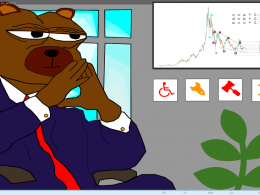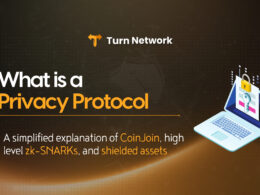In my previous article “Is Cardano’s Problem Really Marketing?” I wrote about the fact that contrary to popular belief, Cardano’s problem is liquidity and not marketing. A fundamentally different accounting model (EUTXO vs account-based) than the rest of the DeFi space has limited the potential for growth due to the lack of support for the established stablecoins like $USDT and $USDC. Cardano has responded by developing organically its own stablecoins such as $iUSD, $DJED and $USDM. Another contributing factor was that Cardano launched support for smart contracts, thus allowing the creation of DeFi dApps, right at the end of last cycle’s bull market. Since then the development and growth of both DeFi dApps and organic stablecoins has happened during the bear market.
One of these developments has been the slow but steady growth of the RWA (real world asset) market niche. In my other previous article “Real World Assets, to be or not to be?” I described this new narrative in the cryptoverse and how Cardano is positioned to be an excellent blockchain for it. However, back in April 2024 when this article was published on Adapulse the ecosystem of Real World Assets was not very developed. In this article I highlighted Tiamonds, Finest and Palmyra as three different endeavors in this space.
Since then Finest has released its first real world asset in the form of tokenized granite. 500 blocks of Black Galaxy Granite were tokenized on the Cardano blockchain offering an average ROI after 3 months of 10%. The answer to this offering was very well received, selling out in little over a week since going live. After this proof-of-concept, Finest is now preparing to sell tokenized gold on the Cardano blockchain. Together with Pro Aurum, serving as Finest’s trusted gold partner, Cardano will soon have tokenized gold that can’t be frozen as it will live as another Cardano Native Asset on-chain.
The only downside to Finest’s platform is the need to complete KYC (know your customer) due to compliance and regulatory reasons. This was the same for the initial offering of tokenized granite. However, if the reader would prefer to remain anonymous, it will be possible to buy fGLD (the ticker chosen for Finest’s tokenized gold) on the secondary market. DeFi dApps like Strike Finance have already hinted on providing support for using fGLD on their platform.
Having access to tokenized gold on the Cardano blockchain is not only about providing a safe asset to hold which preserves your purchasing power. It’s also about an opportunity to unlock and attract liquidity from traditional finance and other blockchain ecosystems. Currently only Ethereum offers tokenized gold in the form of Pax Gold ($PAXG) and Tether Gold ($XAUT). However, due to Ethereum’s architecture these tokens are ruled by a smart contract which can freeze assets on your wallet if some government agency would demand it. This is not possible on the Cardano blockchain which offers better security for holding assets long term.
But Finest is not the only enterprise exploring the chance of offering tokenized gold on Cardano. I recently received an email from Emurgo stating that “Cardano is set to welcome the first prominent gold-backed token, Kinka Gold ($XNK), into its blockchain ecosystem”. Whether Finest gold or Kinka gold will be first, only time will tell, the important thing is that Cardano will not only get one tokenized gold but two! Competition is always good and having two different offerings will only make the ecosystem more resilient. Kinka is a subsidiary of UNBANKED, INC., a publicly-listed neo-finance services company in Japan that is opening up access to on-chain economies to the world. $XNK is a gold-backed token, with each token representing one ounce of premium Japanese gold that meets all LBMA (London Bullion Market Association) standards.
Emurgo is also very close to launching their own fiat-backed stablecoin $USDA through their subsidiary Anzens in collaboration with Encryptus and BitGo. All of these new liquidity vehicles will help Cardano build a robust foundation on which to build the next generation of Decentralized Finance applications that can rival Ethereum.
Why is gold important?
But why is gold important if we are building the future of decentralized finance on-chain? It might be counter-intuitive that having the oldest value reserve on the blockchain would help take this new space to the next level of evolution. However, gold has been an element that humanity has always been fascinated with. The fact that it’s an element means that it can’t be reproduced or fabricated, it can only be mined from the earth. It’s also shiny and it weighs more than it looks, giving it “magical-like” features. But more importantly, gold has a proven history as a store of value and one which humanity seems to go back to during uncertain times and uncertain times are upon us.
The geopolitical world has been changing for the last couple of decades and this change will only continue to accelerate as the world’s powers shift and new alliances are made. The world is moving from a unipolar to a multipolar one and that means a change in the economic dynamics. The rise of BRICS and their defiance against the US dollar as the single currency of international exchange means that gold, which has been asleep for quite some time, has now awakened once again.
A recent article by Watcher Guru states that BRICS currency could be a basket of which 40% is tied to gold and 60% is tied to local currencies. This comes after the news from last year when BRICS announced a plan to ditch the US dollar in a three year transition plan. Given that BRICS is composed of 10 full member countries with another 40 smaller nations waiting to join, the three year de-dollarization plan will surely send ripples across the financial world.
The road ahead
The world is changing and the road ahead will prove challenging as old structures are broken and new ones rise in their place. Blockchain technology is one of these disruption forces that generate and will continue to generate new relationships between people around the world. Bitcoin was born from the Great Financial Crisis of 2008 as a response to the corrupt financial system that serves only a powerful minority. Meanwhile, Cardano was born as a response to the needs that neither Bitcoin or Ethereum could fulfill. After seven years of hard work, Cardano is now positioning itself to become a powerful and robust blockchain, a platform for everyday people to use during these uncertain times ahead.










